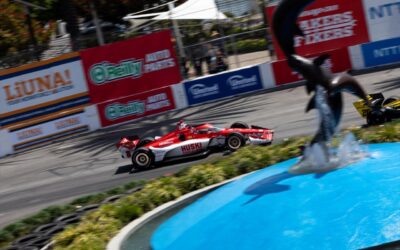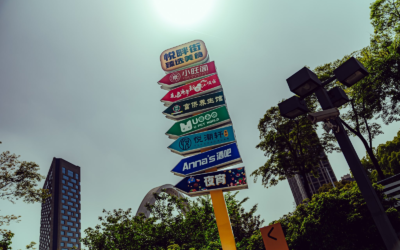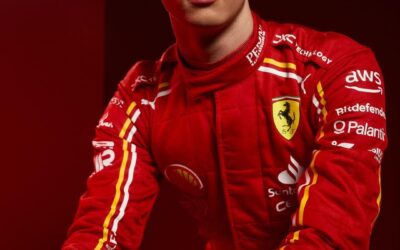Ayrton Senna left an unforgettable mark on the world of motorsports, inspiring a new generation of drivers and safety regulations. ATRL’s Gaby Woodhouse takes us through his life and legacy.
This article is a part of our ‘History of Motorsports’ series. These are a selection of short, educational articles discussing important events and figures across a wide variety of motorsports series.
Ayrton Senna de Silva was a Brazilian Portuguese Formula 1 driver, born on 21st March 1960 in Sao Paulo, Brazil. He was the middle child born to a wealthy Brazilian family with an older sister and younger brother. Senna began his racing career at age 13, driving a kart built by his father, using a 1-Horsepower lawnmower engine. He would go on to win the South American Kart Championship in 1977. To help advance his single-seater racing career, Senna moved to England in 1981, joining the Van Diemen team and winning the RAC and Townsend Thoresen Formula Ford 1600 championship in his rookie year.
He only remained in England for one year before returning to Brazil and taking up a role in the family business; however, he was offered the opportunity to drive for a Formula Ford 2000 team and decided to return to the UK. Racing under his mother’s maiden name of Senna for the first time, he went on to win both the British and European Formula Ford 2000 Championships in 1982.
Senna was promoted to the Formula Three Championship for the 1983 season, racing for the West Surrey Racing team, and won the championship. During the season, Senna was a test driver for several Formula 1 teams, including Williams, McLaren, and Toleman, before being picked up as a first-team driver by Toleman for the 1984 season alongside Venezuelan driver Johnny Cecotto.
Senna made his F1 debut in 1984 at the Brazilian Grand Prix; however, he did not finish the race after retiring on lap 8 when his turbocharger failed. He did not let the disappointment get to him. He earned his first championship points in the second race of the season, finishing in P6 in South Africa before going on and repeating the performance in Belgium. Senna finished his rookie season with three podium finishes securing himself 9th place in the drivers’ championship.
In 1985, Senna joined Lotus and was paired with Elio de Angelis. The duo seemed almost unstoppable at times. Despite several reliability issues, Senna racked up an impressive 7 pole positions, the highest of all the drivers that year. He also had two race wins which promoted him to fourth place in the driver’s championship, one spot ahead of his teammate.
With the departure of de Angeles to Brabham, Senna remained at Lotus for 1986, partnering with Scot Johnny Dumfries. He started the season strongly, coming second in the opening race in Brazil before winning the Spanish Grand Prix beating Mansell by just 0.014 seconds. However, his season was again marred with a few reliability issues, especially in the second half of the calendar. He found himself slipping back down the rankings to third place behind Mansell and Piquet of Williams-Honda. Senna secured eight pole positions and six podium finishes throughout the season, once again finishing fourth in the drivers’ standings.
For 1987, Lotus secured a new engine deal for the same turbocharged Honda V6 engine Williams had used to win the previous year’s constructor championships and another new teammate in Satoru Nakajima. At the beginning of the season, Senna had mixed results ranging from a podium finish in San Marino to a collision with Mansell at Spa that led to an altercation in the pits. Mansell needed to be restrained by Lotus mechanics after grabbing Senna by the throat. Senna went on to win the next two races, putting him at the top of the standings; however, the superior Williams cars still had the overall advantage compared to Lotus, meaning Senna finished the season in third place behind both Williams drivers. Senna became dissatisfied with his opportunities at Lotus and made a move to McLaren for the 1988 season.
Joining 2-time world champion Alain Prost at McLaren, the competitive nature of both drivers meant there were several dramatic race incidents over the next five years. However, this personal rivalry did not prevent them from working together to keep ahead of their main competitors Ferrari, Williams, and Benetton.
Senna saw a high level of success during his years with McLaren and his first season with the team set the groundwork for what was to come. He rewrote the record books during the 1988 season, winning 8 Grand Prix races and clocking up an impressive total of 11 podium finishes and 13 pole positions. He finished the year on 90 points and won his first drivers’ championship.
The 1989 season saw the rivalry between Senna and Prost intensify as they both competed for the driver’s championship, with Prost coming out on top after crashing with Senna in the penultimate race of the year in Suzuka. Senna still managed to set new records throughout the season, leading every lap of the races in San Marino, Monaco, and Mexico. Another driver did not equal it until 2012 when Sebastian Vettel repeated the feat. Senna finished the year with six race wins and second-place after securing pole in 13 of the 16 races that year; however, the focus seemed to be on the rivalry between himself and Prost, which saw the latter leave McLaren at the end of the year, making a move to Ferrari for the 1990 season.
Senna was joined at McLaren by Gerhard Berger for the start of the 1990 season, and the change in teammate seemed to be the motivation he needed, taking a commanding lead of the championship from the start. The rivalry between himself and Prost also reached new heights, and they entered the penultimate race of the year with Senna having 6 wins, 2 second-place, and 3 third-place finishes under his belt compared to 5 race wins for Prost. Once again, the drivers were alongside each other with Senna in pole and on the dirty side of the track, after an appeal to move pole position to the clean side of the track was denied by then FIA president Balestre. This allowed Prost the better start off the line. As Senna went to re-overtake the Ferrari, the cars came together into turn one, causing both to hit the tyre barrier and secured Senna the top spot in the drivers’ championship for the second time.
1991 was another successful year for both Senna and McLaren, with wins being secured in the first 4 races of the yea. By midseason, Mansell brought the challenge to Senna, thanks in part to the Adrian Newey-designed Williams-Renault car, and the battle remained close for the rest of the season. Senna finished the season with seven race wins and 12 podiums overall, breaking another record by becoming the youngest ever 3-time world champion; however, this was the last prosperous year Senna would have with McLaren.
The 1992 season saw the McLaren falling behind a newly competitive Williams FW14B, and its combination of aerodynamic-enhancing active suspension and Renault V10 engine soon left the McLaren of Senna behind. After a disappointing season with only three race wins and 7 podium finishes, Senna found himself in P4 of the drivers’ championship, his lowest position in 5 years, leading to speculation around where Senna’s future lay for the following year.
McLaren owner Ron Dennis attempted to secure a supply of the Renault V10 engine for the 1993 season; however, when he was not successful, Senna approached Williams. Due to the return of Prost, who had a caveat in his contract with the British team that allowed him veto power on who would be given the second seat at Williams, Senna remained at McLaren for 1993. McLaren, who had not managed to secure an engine manufacturer, was forced to take a customer supply of Ford V8 engines which were two specifications behind those used by Ford factory team Benetton. Dennis convinced Senna to remain at McLaren despite the lower engine specs as they had introduced a new focus on mechanical sophistication, including an effective active suspension system. Senna was not convinced, and his contract for the season was negotiated on a race-by-race basis, allowing the Brazilian the option to leave at any time if he did not believe the car to be competitive enough. Despite the contract’s nature and the engine’s lower power, Senna secured himself 5 race wins and seven podiums throughout the season, finishing second in the drivers’ standings.
After winning the championship in 1993, Prost once again retired from Formula One, and this opened the door for Senna to join Williams for the 1994 season, where he would drive alongside Damon Hill. Regulation changes for this year also saw the banning of active suspension, traction control, and ABS meaning the Williams FW16 was not as superior as the previous FW15C and left Senna competing closely with Benetton driver Michael Schumacher. Senna did not seem comfortable with the handling of the car during pre-season testing, and he had his worst start ever when the season began in Brazil with two DNF’s in the first two races, despite securing pole during qualifying for both races.
The third race of the 1994 season saw the teams return to Imola, and after his disappointing start, Senna declared that this would be where his season would start. The qualifying session began on Saturday afternoon. Rubens Barrichello was involved in a serious accident with his car becoming airborne at the Variante Bassa chicane before hitting the tyre barrier and fence at the side of the track. Barrichello suffered a broken nose and arm, which caused him to retire from the rest of the weekend. During the qualifying session, there was a further incident with Austrian rookie, Roland Ratzenberger, losing his life after his car’s front wing broke off on entering the Villeneuve corner, sending his car into the concrete retaining wall at high speed. After this incident, Senna headed straight to the medical centre to check on the rookie. He was met by FIA Medical Chief Sid Watkins, who advised Senna he should retire from the race scheduled to go ahead as planned the next day.
The incidents from qualifying affected Senna deeply, and he spent the Sunday morning prior to the race in meetings with former teammate and rival, Alain Prost as they discussed the option to bring back the Grand Prix Drivers’ Association, a driver’s union, with the aim of improving safety in Formula 1. Despite the previous day’s incidents, all the drivers lined up on the grid ready for the race to begin; however, a start line accident interrupted the proceedings as Lehto’s Benetton-Ford stalled and was hit from behind by the Lotus of Lamy. A wheel and some debris from the car landed in the grandstand, injuring eight fans and a police officer, which caused the safety car to be deployed for several laps while the remaining debris on track was cleared away.
Racing resumed on lap 6 with Senna leading, closely followed by Schumacher; however, it was not long before another incident delayed proceedings further. On lap 7 Senna rounded the high-speed corner of Tamburello, his car left the race line at roughly 191 mph, running in a straight line off the track, and he hit a concrete retaining wall at around 145mph. The race was red-flagged, and Watkins and his medical team extracted Senna from his car within 2 minutes of the initial impact. He received initial treatment at the side of the track for his weakened heartbeat and significant blood loss due to a temporal artery rupture. Watkins completed an on-site tracheotomy before Senna was airlifted to Bologna’s Maggiore Hospital. The head of the hospital’s emergency department announced at 18:40 to say Senna had died; however, his official time of death under Italian law was 14:17, which was the time of the impact with the wall.
The death of both Senna and Ratzenberger and the injury of Barrichello in one weekend lead to several safety improvements within the sport, and these changes have ensured their legacy has lived on long past the tragic events of 1st May 1994. Some of the safety improvements brought in as a direct result of these tragedies include improved crash barriers, redesigned tracks, higher safety standards, such as larger sills along the driver cockpit, and significant cuts to engine power. In addition to these safety changes, the Tamburello corner and other parts of the Imola circuit were altered prior to the 1995 season. There were also changes to the on-track medical procedures that saw personnel hold up curtains at crash sites to prevent the public from witnessing distressing images as they had seen on live television with Senna.
ABOUT THE AUTHOR

I fell in love with motorsport watching the Formula 1 with my mum every Sunday and have fond memories of the early 90’s and Senna. I’ve supported and followed McLaren for as long as I can remember. I specialise in F1 and the feeder series. Outside of motorsport I work in change delivery and can be found most weekends at a karting track supporting my girls in the Honda Cadet Series.
Related Articles
Hitting the Apex: Acura Grand Prix of Long Beach
After a month off, IndyCar returns for the Acura Grand Prix of Long Beach, hosted on the historic street circuit. A favorite among drivers, the track challenges with tight corners and rewards skillful qualifying. Penske’s Josef Newgarden leads the championship, while Andretti’s Kyle Kirkwood and Chip Ganassi Racing’s Álex Palou look to build on previous successes. Théo Pourchaire debuts with Arrow McLaren, filling in for the injured David Malukas.
Hitting the Apex: Shanghai International Circuit
It's Shanghai Race Week! Read on for everything you need to know about the Shanghai International Circuit.The Shanghai International Circuit, also referred to as the Shanghai Audi International Circuit for sponsorship reasons, is a motorsport race track located in the...
Navigating the Future of Formula 1: Reserve Drivers and Their Path to a Full-Time Seat
ATRL's Tiegan Batchelor explores the world of reserve drivers' F1 prospects. Oliver Bearman's standout performance highlights the talent of these drivers, yet the road to a full-time seat remains uncertain due to financial constraints and fierce competition.In the...
Stay Up to Date With The Latest News & Updates
Interested in Writing for ATRL?
Contact us now! Fill out the form below and wait for an email from us to get started.
Join Our Newsletter
Subscribe to updates when we post a new article!
Follow Us
Follow us on Twitter and Instagram @ATRacingLine




Recent Comments